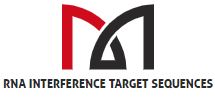CRISPR/Cas9-Mediated Hitchhike Expression of Functional shRNAs at the Porcine miR-17-92 Cluster.
Successful RNAi applications depend on strategies allowing stable and persistent expression of minimal gene silencing triggers without perturbing endogenous gene expression. In this study, we proposed an endogenous microRNA (miRNA) cluster as a novel integration site for small hairpin RNAs (shRNAs). We successfully integrated exogenous shRNAs at the porcine miRNA-17-92 (pmiR-17-92) cluster via a CRISPR/Cas9-mediated knock-in strategy. The anti-EGFP or anti-CSFV shRNAs could be stably and effectively expressed at the control of the endogenous promoter of the pmiR-17-92 cluster.
[Linking template=”default” type=”products” search=”SAP-1″ header=”2″ limit=”100″ start=”2″ showCatalogNumber=”true” showSize=”true” showSupplier=”true” showPrice=”true” showDescription=”true” showAdditionalInformation=”true” showImage=”true” showSchemaMarkup=”true” imageWidth=”” imageHeight=””]
Importantly, we confirmed that hitchhike expression of anti- classical swine fever (CSFV) shRNA had no effect on cell growth, blastocyst development and endogenous pmiR-17-92 expression in selected transgene (TG) porcine fetal fibroblasts (PFFs) clones. Moreover, these TG PFFs could inhibit the replication of CSFV by half and could be further used for generation of transgenic pigs. Taken together, these results show that our RNA interference (RNAi) expression strategy benefits numerous applications, from miRNA, genome and transgenic research, to gene therapy.
